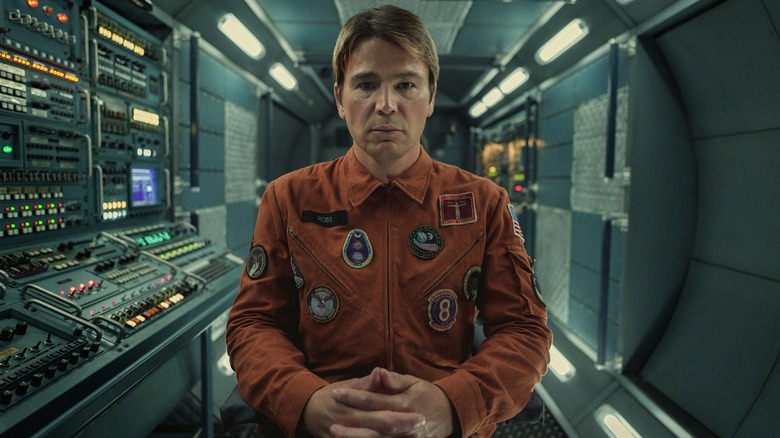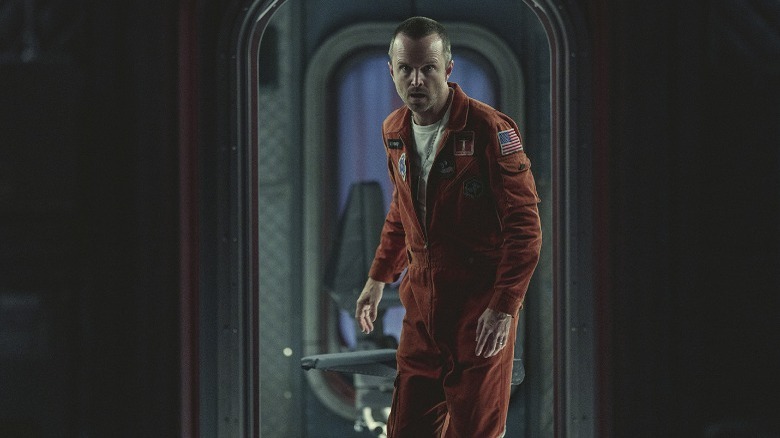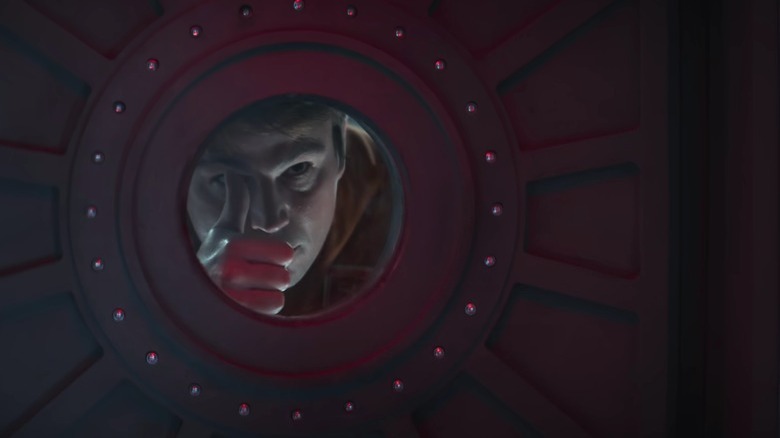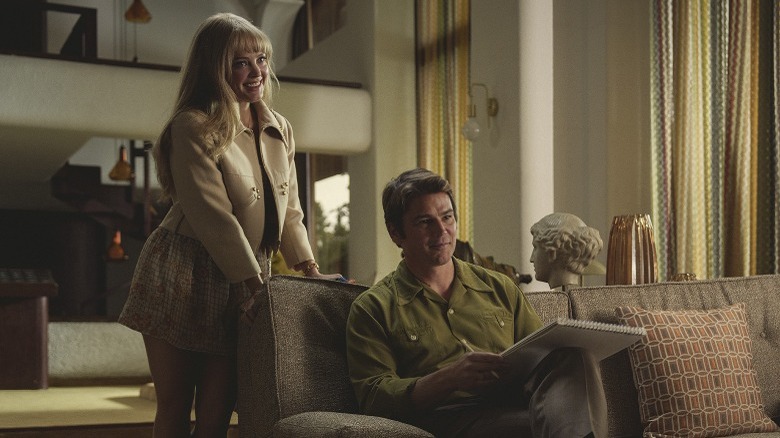How One Black Mirror Season 6 Episode Borrowed From 2001, James Bond, And Das Boot
For the first time in four years, Netflix is set to drop another season of Charlie Brooker's mind-bending anthology series "Black Mirror." The new season will include five episodes with topics ranging from paparazzi culture to amateur sleuthing to — in what's definitely the most meta part of the preview for "Black Mirror" season 6 – a surprising movie that appears on a very Netflix-like platform. One of the season's creative standouts, though, is likely to be "Beyond The Sea," a space-set episode starring Josh Hartnett and Aaron Paul that is the subject of a feature in the latest issue of SFX magazine.
The outlet spoke with production designer Udo Kramer (whose past work includes an award-winning run on Netflix's "Dark") about bringing the unique visual aesthetic of the episode to life. Intriguingly, the team behind "Beyond The Sea" decided to design the world of the story around the visions of space travel the world imagined before it had actually ever happened. That meant considering the visuals of movies that came out before man landed on the moon in 1969, including "2001: A Space Odyssey" and the Sean Connery Bond flick "You Only Live Twice."
'Beyond the Sea' is like a lost late-'60s sci-fi film
"We didn't want it to be a period movie from today's perspective looking back, but more like an undiscovered movie that somebody shot at that time," Kramer explained. "Stanley Kubrick is, of course, the master, but they were trying to craft a version of the future from their knowledge. This should look like it's from 1969." The episode, then, likely couldn't pull too much from Kubrick's ahead-of-its-time space epic; instead, it tried to imagine how filmmakers from the sixties might have conceptualized a space station from that same era. They looked at Skylab, the first-ever U.S. space station that launched in 1973, but also looked at Bird 1, the fictional spaceship in "You Only Live Twice." That, Kramer said, "was where people got the idea of what a rocket looked like, because it wasn't in the media."
The Bird 1 in part resembles the rockets that would take flight in the decades to follow the 1967 spy film, but looks more like a capsule or missile with no visible propulsion system or landing gear. Kramer says that the design team behind the upcoming "Black Mirror" episode also "wanted a ship that was believable if space travel happened at the time." He explains that the ship, which SFX describes as more "grounded" than typical sci-fi ships seen in franchises like "Star Wars," is "not round because people decided that round things are cool; it is round because it fits into the rocket and that is the only way to get it into space." An entire ship interior was built for the episode, which apparently uses minimal special effects outside of a moonwalk scene.
The team developed some set hacks to shoot in a cramped space
Kramer says the production also followed in the footsteps of the 1981 war film "Das Boot," employing some set tricks that allowed for better camera access in a tight space. "If you remember 'Das Boot,' the legendary movie about submarine battle, they found a way to jump through this boat with the camera," Kramer explained. "They developed special gear, like a Steadicam-ish thing, and we did similar things." The specially designed elements include a removable piece of the prop doors that would allow for a camera track to be placed on the ground during tracking shots.
Just as the famous "Black Mirror" episode "San Junipero" used a glittering '80s aesthetic to create its universe, "Beyond the Sea" sounds like it will have the visual aesthetic and production quality of a classic film. "It doesn't feel low budget in a way, but it feels more like very detailed attention to the way of moviemaking back then."
There's a 'lovable charm' to the retro design
Still, the team didn't aim for perfection so much as a "lovable charm" that would match the production limitations of the time period in question. "For space movie addicts, a lot of the fun comes from the fact that you recognize things that you normally have," Kramer said, citing the flux capacitor from "Back to the Future." So what's the "Black Mirror" equivalent? Antennae made with aluminum salvaged from the set decorator's first aid kit.
I'll admit that by the end of the 2010s, my initial passionate enthusiasm for "Black Mirror" had waned after Netflix started pumping out a higher number of episodes with more varied quality. Four years later, though, it feels like Brooker and his team have had plenty of time to come up with challenging and creative stories on par with the show's high points. Kramer's insights and wide-ranging references are a reminder that this show was once considered the epitome of prestige sci-fi TV for a reason.
"Black Mirror" returns to Netflix on June 15, 2023, and we can't wait to see it.



